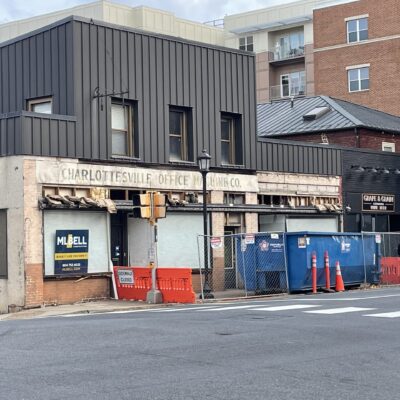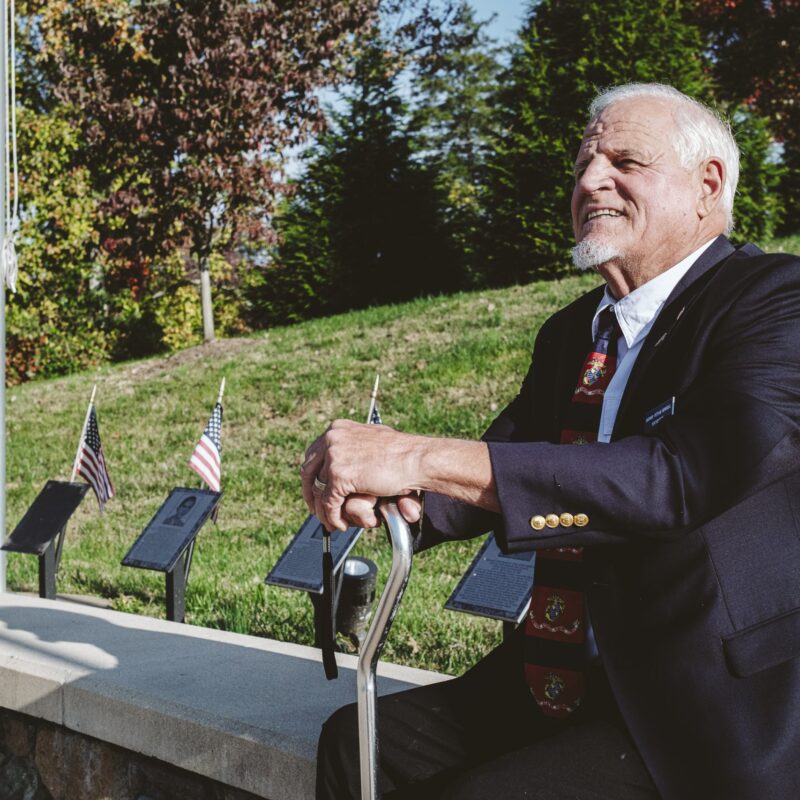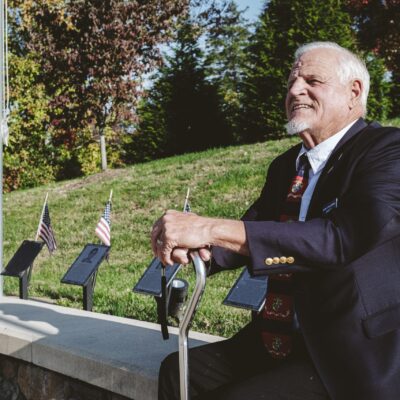About five years ago, while hosting a party for the Charlottesville 10-miler, Bill Hinckley got into a conversation with his neighbor Ron Higgins about his house at 620 Lexington Ave. With his daughter and son-in-law having children, Hinckley and his wife, Renate, wanted to give their daughter the house and build a place for themselves in the backyard. But Hinckley knew that he would never be able to subdivide the property.
But Higgins, at that time the head of city planning, told Hinckley that the city had just passed a rule that allowed them to build an exterior accessory unit in their backyard. Best of all for Hinckley, it required only staff approval, meaning no pleas before the Planning Commission or City Council. The form was only a page long.
|
Bill Hinckley loves the energy efficient design of his exterior unit, but to some neighbors, it’s just too big. |
Hinckley (a self-described “energy nut”) didn’t get around to the project until he sold his cabinet-making business, but now the unit is almost done, a two-story, modernist structure made of highly insulated prefab foam.
“It’s been a godsend for us,” says Hinckley.
The Hinckley’s situation is almost exactly the sort of scenario that City Council envisioned when it comprehensively rezoned the city in 2003, which included the new ordinance for accessory apartments. Homeowners could put a room over a garage or tack it onto the back of the house and rent the property, or make it a “granny flat” for an aging family member.
But the realization of Hinckley’s dream has come at the expense of his relations with neighbors Carla Mullen and her partner, Walt Johnson, who say that Hinckley’s accessory unit doesn’t fit with the intent of the ordinance.
“We just think they’re being a little unreasonable about the scale of the structure,” says Mullen. “It shouldn’t be called an exterior accessory apartment. It’s another house.”
“It’s just amazing that this is allowed in the city to happen,” says Johnson. “It ruins our quality of life.”
Technically, there is nothing wrong with the Hinckleys’ accessory unit. It takes up 30 percent of the rear yard, and it is set back 5′ from the lot lines. The building is smaller than the main house.
But though it meets the letter of the law, it doesn’t leave much room to spare—it’s only about a foot smaller than the main house, according to city zoning administrator Read Brodhead, and takes up almost all the space allotted. Excluding the basement, the house, which has a separate address, is about 1,300 square feet, compared to 2,500 in the main house. If the basement is finished, the exterior unit would come to almost 2,000 square feet.
Mullen brought her objections to the city Planning Commission, asking that it change the ordinance so the same thing doesn’t happen to other residents. She presented the Commission with similar ordinances passed in other localities like Fairfax and Arlington that restrict the floor area of the building.
With Mullen’s prodding, the city Planning Commission will take a broader look at residential density and consider changing the regulations.
“Inappropriate infill development is what we’re seeing happen here,” says Commissioner Cheri Lewis, who also points to residential demolitions, excessive people living in a property and projects like the 6,000-square-foot house recently designed for Second Street NE. “And it’s no longer a threat, it has manifested itself in our city.”
“We want for people to be able to age in place, we want for families to live together,” says Lewis. “But they were never meant to be exploited to allow someone to construct a separate single family residence on one lot.”
Fellow Commissioner Dan Rosensweig says that he’s reserving judgment until the Commission takes a look in the coming months. “I’m going into this conversation with an open mind,” says Rosensweig. “It’s easy to react to one project, but I think we have to step back a little bit and look at it from a greater altitude.”
For his part, Hinckley says he’s sorry about what happened with the neighbors. But he also believes that increasing density is a good thing.
“I think it’s great,” Hinckley says. “I think that greater density makes a lot more vibrant community than, for example, the suburbs, where everybody’s got their two-acre plot but they don’t even know the people next door.”
C-VILLE welcomes news tips from readers. Send them to news@c-ville.com.






